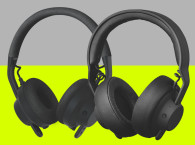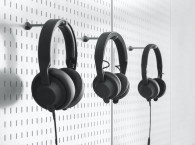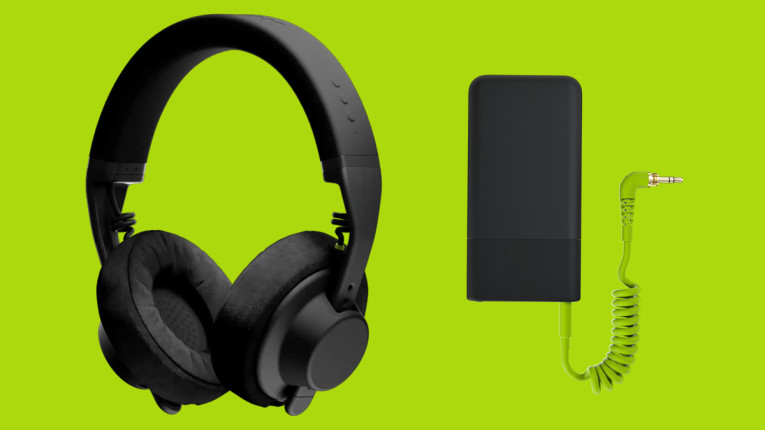
The new TMA-2 Wireless+ headphones are a ready-to-order configuration that the Danish company is using to promote the concept of "low-latency wireless freedom" as an alternative to using Bluetooth. With shipments scheduled to start December 27, 2021 for those who pre-order, the new TMA-2 Wireless+ headphones and the proprietary W+ Link transmitter are offered with the company's signature bio-diaphragm driver modules, and comfortable Alcantara earpads. A configuration that sells for 350 Euros and also offers Bluetooth 5.0 connectivity, providing over 80 hours of playback from a single charge.
This product is a clear warning for the Bluetooth SIG to step-up their game. When the market starts offering proprietary solutions to solve unique user requirements and answer market needs, it's a very clear sign that standards organization are not fulfilling its role effectively. We've seen this with the lack of support for uncompressed, high-resolution audio options for the high-end music market, which clearly requires a standard 24-bit option for at least 96kHz. And we are now seeing low latency audio link implementations popping up here and there to serve gaming applications with USB dongles.
As AIAIAI points out accurately in their website, Bluetooth is a broad technology used for wireless communication in many areas such as medical, smart devices, IoT, communication, and more. "Bluetooth was not developed specifically for wireless audio," they say. Well, audio is the most important and probably most defensible use-case for Bluetooth, and it's about time for the Bluetooth SIG to update the technology and accommodate market needs that are self-evident. Bluetooth LE Audio was a step in the right direction, but there's more quality levels that need to be accommodated in the standard.
Qualcomm is an example of a company that reacted quickly to the fact that streaming music services have started to offer lossless music streaming options, and has now extended its aptX Adaptive set of technologies - supported by its latest Snapdragon Sound processors - to also include a 16-bit "CD-quality" lossless option over Bluetooth. These are areas that Bluetooth audio should be serving, within the recognized constraints of being a low power implementation and relatively short range technology. The Bluetooth SIG announced LE Audio two years ago, partially addressing these requirements, but apparently they are not moving fast enough and ambitiously enough. And given the source/sink dilemma, companies are offering their own source adapters to quickly sort that part of the problem.
The AIAIAI TMA-2 Studio Wireless+ headphones are designed to empower music creators with "the freedom to create wirelessly" and the company designed the new W+Link transmitter to serve that purpose with a proprietary RF technology for ultra-low latency and uncompressed, 16-bit transmission. In this case, because AIAIAI is targeting professional musicians, DJs and music producers, the input in the W+Link transmitter is the "good-old" audio jack of the 1/4" variety - the headphone output that's available on all music sources and mixers.
How did AIAIAI do it? They designed a proprietary wireless link RF transmitter with a stable and robust 16ms latency connection, which compares well to the 100ms obtained with the standard AAC encoded transmission over Bluetooth on Apple devices, or even the 40ms allowed by aptX Low Latency mode using compatible source and sink devices. This is when looking at specifications. We all know that the reality with Bluetooth varies tremendously depending on devices. Users with old Bluetooth 4.1 headphones and a cheap OneOther Android phone will get typically 500ms latency when their devices default to the standard SBC codec, while even modern Bluetooth 5 headphones will reveal a typical 250ms latency in AAC or aptX/aptx HD modes. In fact, Android devices from different makers, using many of the Android forks, are a remarkably fragmented ecosystem, incredibly unpredictable in terms of latency. Not something that a DJ could ever use to scratch, or that a musician could interact accurately with.

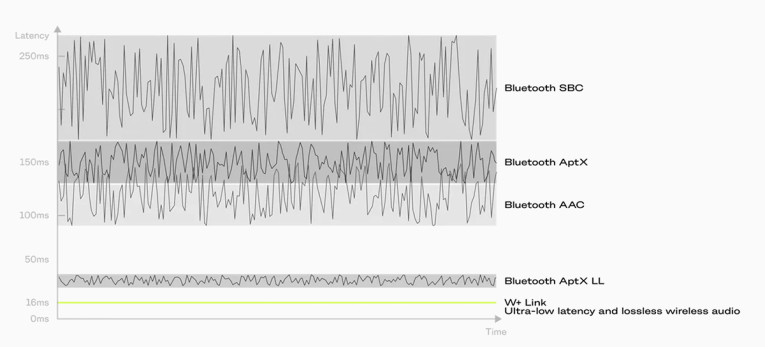
None of those unpredictable latency problems are in place when using a dedicated W+Link transmitter - which product designers will note is the size and weight of a smartphone in itself - that doesn't even have to deal with digital audio codecs. Compression and decompression is computing intensive and is responsible in great part for the latency in the audio chain - and obviously reduces the audio quality even if hardly perceptible. AIAIAI is using uncompressed digital audio on a 1.5kbps digital link, which means that all they need is to encode the analog audio to digital, in this case the not very demanding old 16-bit flavor (@44.1kHz instead of the logical 48kHz because DJs still use CDs?).
Interesting to note how these days "lossless" has become a sort of consumer reference for "high-quality" audio. Because of this, AIAIAI even uses the term occasionally and interchangeably with "uncompressed" in their website. The problem is, lossless still requires data compression (non-destructive but still compression) and would induce latency anyway. So, for this application it would be important to not say lossless. As always, lossless "ok", uncompressed "better".
The other part of the W+Link development was making sure the wireless connection would be robust enough and again not induce any additional delay as it can result from using companding techniques in order to make digital audio transmission over radiofrequency more resilient. AIAIAI just says they are transmitting the uncompressed audio signal over a "larger bandwidth" digital link with dual antennas in "a dedicated radio-frequency band," in order to secure a stable signal without drop-outs, without specifying further.
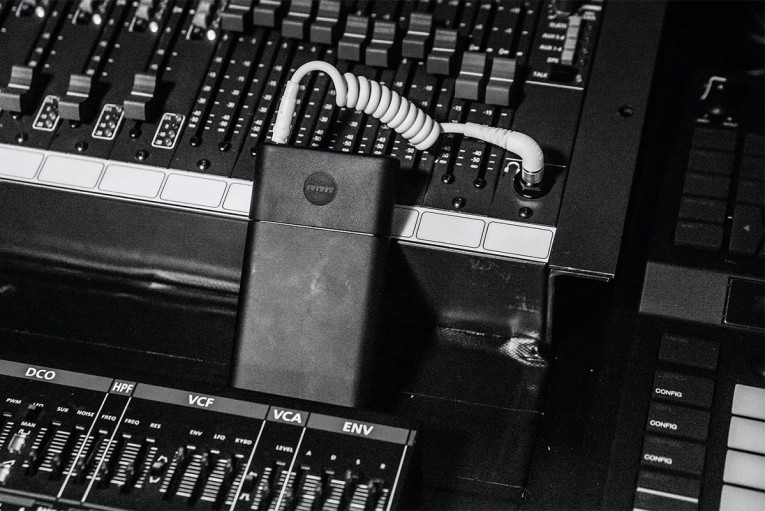
This means that AIAIAI is using a completely redundant connection over a fixed link to connect the W+Link transmitter to the TMA-2 Wireless+ headband receiver, in order to avoid interference from surrounding RF sources - unlike a Bluetooth connection which continuously swaps frequency bands. In result, this process ensures the 16ms latency is determined and not variable according to conditions. And since the W+Link transmitter is a large, robust design, it can easily accommodate a powerful radio system and antennas that should avoid problems in close proximity - as in the typical working environment in studios and DJ booths (5 to 10 meters / 16 to 32 feet).
With a larger bandwidth requirement than allowed by a standard Bluetooth link because of not using data compression, the W+Link becomes a robust alternative for these users who essentially are replacing the usual coiled cables and large 1/4" jacks with a "thing" they plug to the same output. Of course, the TMA-2 Wireless+ headphones also support Bluetooth 5.0, allowing users to still get the convenience for other uses.
During the beta-testing process - something that AIAIAI does exceptionally well, because they know their user-base - the TMA-2 Wireless+ headphones received rave reviews, confirming that the "latency-free" wireless experience was effective for the intended use, such as DJing. "Having that great sound wireless and with such incredibly low latency is something I haven't experienced before - and now I have, I kind of want it in everything!," says a DJ. "There is no latency. I couldn’t even feel it. I could scratch, it felt natural! The whole point of this is that it makes it easy for you to play keyboard, makes it easy to use a drum machine, to DJ and not have to worry about the delay!," says another.

TMA-2 Wireless+ Design
The most important thing for these users is the overall experience from using the TMA-2 Wireless+ in their creative process and long sessions. As recognized from the brand's modular headphone platform, the TMA-2 Wireless+ are a versatile and professional pair of headphones that deliver all the options, from the ultra-low latency use with W+Link, to over 80 hours with Bluetooth 5.0, and even supporting a coiled cable for the traditional setup, when needed. The switching between the wireless modes is intuitive with the standard pairing process in the headband buttons. And yes, a W+Link transmitter (X01) can be "paired" to different headphones (different headbands).
The standard configuration for the TMA-2 Wireless+ includes highly detailed audio from AIAIAI's signature bio-diaphragm 40mm, neodymium magnet, 32 ohm, over ear drivers (S05MKII). This is a driver design using a bio-cellulose diaphragm made from bacterial cellulose, an organic compound grown using certain types of bacteria. The precision-grown diaphragm from bio-cellulose is stiffer, lighter, and stronger than regular PET speaker units, allowing the diaphragm to vibrate with less distortion and retaining clarity of sound at high volumes - critical for DJs.
The H10 Wireless+ Headband is the main new component that supports the two wireless connection modes and is charged via USB-C. After the pairing process, the three buttons in the headband are used for play/pause, next/previous track, and volume control. The headphone package is complemented with a pair of E08 earpads with ultra soft over-ear memory foam cushions covered with Alcantara, C02 1.5m coiled cable, and 1/4 to 1/8" screw-on adapter, plus the A01 protective pouch.
Otherwise, we can always go for the modular build-your-own options and combine the H10-X01 Wireless+ Headband and W+Link transmitter combo with our existing AIAIAI drivers and earpads, or order a different set with PU leather earpads from the TMA-2 configurator.
www.aiaiai.audio





